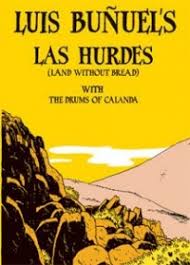. -
- -
-
Enviado por sampandolfyM em 19/12/2011
Las Hurdes: Tierra Sin Pan (1933), (English language: Land Without Bread or Unpromised Land) is a 27-minute-long documentary film directed by Luis Buñuel and co-produced by Buñuel and Ramon Acin. The narration was written by Buñuel, Rafael Sanchez Ventura, and Pierre Unik, with cinematography by Eli Lotar.
The film focuses on the Las Hurdes region of Spain, the mountainous area around the town La Alberca, and the intense poverty of its occupants. Buñuel, who made the film after reading the ethnographic study Las Jurdes: étude de géographie humaine (1927) by Maurice Legendre, took a Surrealist approach to the notion of the anthropological expedition. The result was a travelogue in which the narrator’s extreme (indeed, exaggerated) descriptions of human misery of Las Hurdes contrasts with his flat and uninterested manner.
Buñuel claimed: "I was able to film Las Hurdes thanks to Ramon Acin, an anarchist from Huesca,...who one day at a cafe in Zaragoza told me, 'Luis, if I ever won the lottery, I would put up the money for you to make a film.' He won a hundred thousand pesetas...and gave me twenty thousand to make the film. With four thousand I bought a Fiat; Pierre Unik came, under contract from Vogue to write an article; and Eli Lotar arrived with a camera loaned by Marc Allegret."
Although some film scholars describe it as a documentary, Land Without Bread is in fact, according to film studies scholar Jeffrey Ruoff, an early (some might say prescient) parody of the barely invented genre of documentary filmmaking
The film was originally silent, though Buñuel himself narrated when it was first shown. A French narration by actor Abel Jacquin was added in Paris in 1935. Buñuel used extracts of Johannes Brahms' Symphony No. 4 for the music.
Buñuel slaughtered at least two animals to make Las Hurdes. One Hurdano claimed that he arranged for an ailing donkey to be covered with honey so he could film it being stung to death by bees. Similarly, his crew shot a mountain goat that subsequently fell from a cliff for another sequence
The film was banned in Spain from 1933 to 1936.
There is a Spanish-language dubbed version spoken by Francisco Rabal.
One of the chief concerns of the ca. 8,000 present day inhabitants of Las Hurdes is to fight against the stigma issues affecting Las Hurdes. The resulting stereotype has affected their region at least since playwright Lope de Vega's 1663 comedy, Las Batuecas del Duque de Alba. Casting the region as an area of darkness, disease and ignorance was continued by other writers for centuries before Buñuel's film (Wikipedia)
Sem comentários:
Enviar um comentário